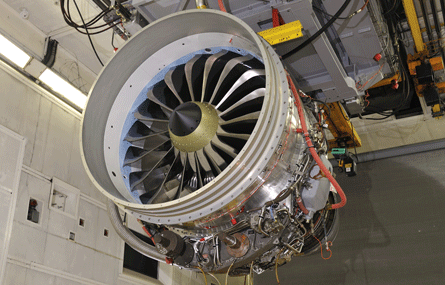CFM International partners General Electric and Snecma have finalised the architecture of their Leap-X turbofan, which is under development to equip the next-generation narrowbody replacements from Airbus and Boeing.
The engine is being designed for a possible service entry in 2016, offering a 16% reduction in fuel burn compared with the best-selling CFM56, which it will eventually replace. However, there are widespread expectations that the airframers will not bring their new 150-seaters to the market before the end of the next decade.
"As the service entry date moves to the right, we get the benefit of that additional time to put more efficient components into the engine," says Leap-X programme manager Ron Klapproth.
The Leap-X will have a bypass ratio of around 10, compared with 5-6 for the CFM56 family, and a core pressure ratio double that of the current engine, at 22. The powerplant will also feature a two-stage high-pressure turbine driving a 10-stage HP compressor, and the low-pressure turbine blades will be produced using ceramic matrix composite (CMC), says CFM executive vice-president Olivier Savin.
"Last year we didn't talk about CMC even though we were working on it, because we didn't want to promise something that is not mature enough," says Savin. "This year we think that it's achievable and it's useful."
The Leap-X core will undergo bench tests starting in mid-2009, and the first run of the full powerplant demonstrator is scheduled for 2012.
"We need to have the core on test a minimum of seven years before certification," says Klapproth.
The first phase of performance tests of Leap-X's 18-blade, 1.8m (71in)-diameter composite fan mounted on a CFM56-5C core at Villaroche in France are around two-thirds complete, with results "in line with predictions", says chief engineer Jerome Friedel. The fan demonstrator will be shipped to GE's Peebles facility later this year for acoustic and crosswind trials, before being returned to Villaroche for 5,000 cycles of endurance testing.
The composite fan and casing, produced using three-dimensional woven resin transfer molding, are expected to yield a weight saving per aircraft of more than 450kg (1,000lb), says Savin. The CMC LPT will save a further 150kg.
 |
|---|
©Eric Drouin/SnecmaThe Leap-X's composite fan is undergoing bench tests in Villaroche |
Source: Flight International
















